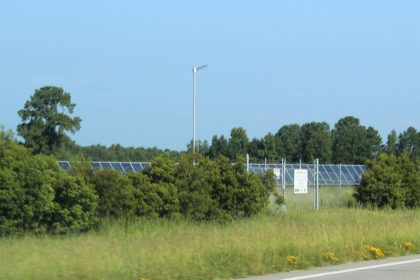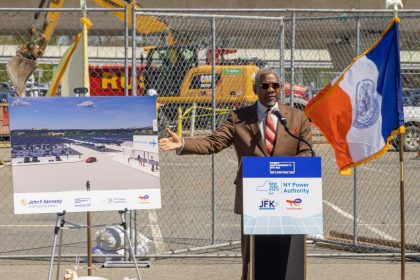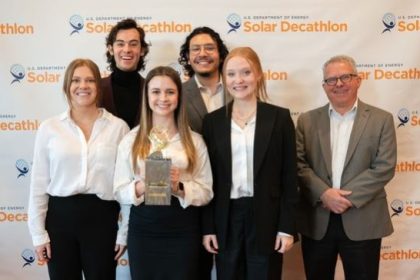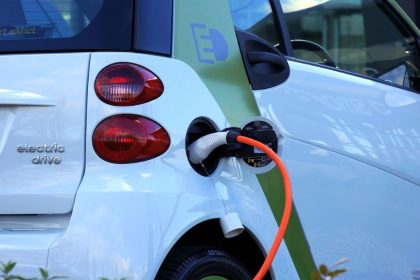White House Kicks Off Bid to Foster Floating Offshore Wind Ambitions
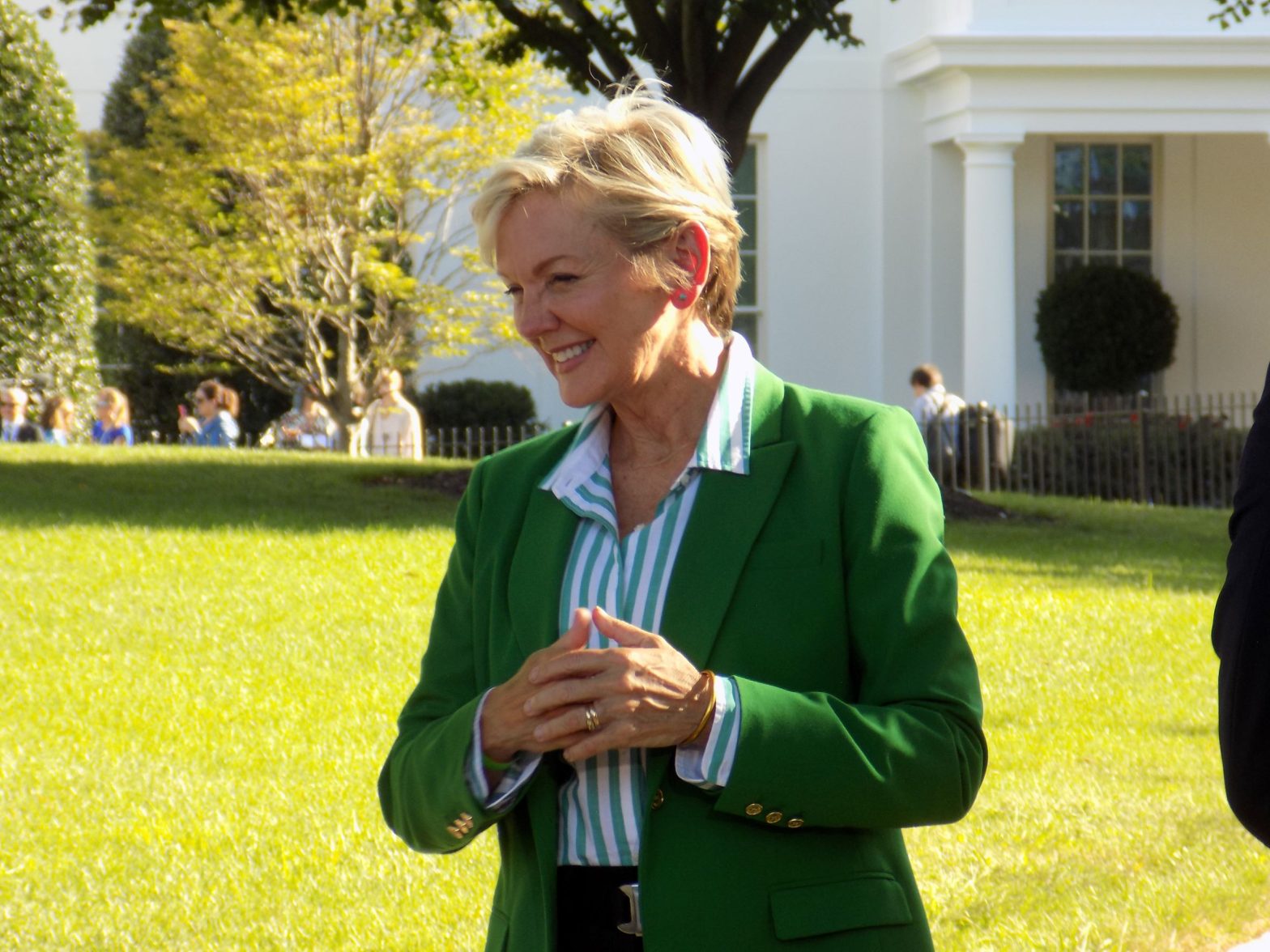
WASHINGTON — The Biden administration launched a series of coordinated actions Thursday to promote the manufacturing and adoption in the U.S. of floating offshore wind platforms — technology officials said could “unlock” vast amounts of energy supply.
“What we’re talking about is launching efforts to seize a new opportunity,” said White House National Climate Adviser Gina McCarthy during a conference call with reporters Thursday morning.
“The wind energy sector — a new American industry — is really booming today because of President Biden’s leadership,” McCarthy said.
“But there are floating technologies that are in their early stages that will enable us to harness even more energy from the wind,” she said. “Today’s coordinated actions are about innovation and deployment.
“What we’re doing is positioning ourselves to lead the world in floating offshore wind and to bring offshore wind jobs to more parts of our country,” McCarthy added.
Energy Secretary Jennifer Granholm said during the same call that floating offshore wind platforms could help “unlock” up to 2.8 terawatts of power, mostly along the coasts of California and Oregon and in the Gulf of Maine.
“To put that in perspective, that’s more than double the total U.S. electricity demand,” she said.
The administration’s embrace of the floating wind farm technology — already successfully deployed on a small scale in Europe — is seen as critical to achieving the president’s goal of deploying 30 gigawatts of offshore wind by 2030 — roughly enough energy to power 10 million homes with clean power annually.
While conventional offshore wind turbines can be secured directly to the sea floor in the relatively shallow waters along the East Coast and Gulf of Mexico, deep water areas, including large swaths along the West Coast and Gulf of Mexico, are more problematic from an engineering perspective — they’re simply too deep to attach wind turbines to the sea floor.
In these areas, which are estimated to hold about two-thirds of the United States’ offshore wind energy potential, floating platforms for wind turbines will make it far easier to develop the renewable resource and grow new manufacturing and maritime jobs.
The primary announcement from the administration on Thursday was the re-creation of what it called the “Floating Offshore Wind Shot,” an initiative aimed at accelerating breakthroughs in engineering, manufacturing and other innovation areas, and reducing the cost of these floating technologies by more than 70% by 2035, to $45 per megawatt-hour.
The administration also announced the Bureau of Ocean Energy Management will advance lease areas in deep waters for floating technology, starting with a lease auction off the coast of California by the end of 2022.
By 2035, Granholm and the other officials on the call said, the U.S. hopes to deploy 15 gigawatts of floating offshore wind capacity by 2035 — enough to avoid the release of an estimated 26 million metric tons of carbon emissions annually.
The Energy Department is also launching a new prize competition and a number of initiatives for floating offshore wind platform technologies, funded by the bipartisan infrastructure law.
These include:
- Floating Offshore Wind Readiness Prize: This is a $6.85 million prize competition that challenges competitors to optimize floating platform technologies and work to get them ready for wide-scale domestic manufacturing and commercialization.
- Floating Offshore Wind Array Design Project: A $3 million project to develop a set of modeling tools to help industry and researchers design commercial-scale floating offshore wind farm arrays in U.S. waters, including their anchors, mooring lines and subsea power cables.
- West Coast Ports Analysis: A nearly $1 million project to reduce key infrastructure challenges by outlining a network of West Coast ports and upgrades needed to deploy commercial-scale floating offshore wind.
- West Coast Transmission Analysis: DOE announced an analysis to review existing transmission studies and identify research gaps related to offshore wind integration in California, Oregon and Washington. This work will help inform future analysis efforts that will aid in transmission planning and buildout.
- Atlantis II: DOE’s Advanced Research Projects Agency-Energy intends to announce $31 million in funding through phase two of its Aerodynamic Turbines, Lighter and Afloat, with Nautical Technologies and Integrated Servo-control program. The ATLANTIS program focuses on novel forms of systems engineering for floating offshore wind systems to drive down costs. This second phase of the ATLANTIS program will focus on experimental testing in ocean, lake, and tank and tunnel environments to further develop new technology for floating offshore wind turbines.
- Environmental Research Award: A $1.6 million project administered by DOE and BOEM to support the coexistence of floating offshore wind with bats on the West Coast of the United States.
- Ocean Co-Use and Transmission Research Awards: The National Offshore Wind R&D Consortium, a partnership established with funding from DOE and the New York State Energy Research and Development Authority, announced five projects totaling $3.5 million to facilitate ocean area coexistence with marine mammals and fishing and to support offshore wind transmission for both fixed-bottom and floating technologies.
This is the first so-called “Earth Shot” the Energy Department has done in collaboration with the Interior, Transportation and Commerce departments.
“Through earlier ‘Earth Shot’ programs we’ve already set ambitious goals to cut the costs of clean hydrogen, long duration energy storage, carbon dioxide removal and enhanced geothermal systems,” Granholm said.
“Now we’re aiming to cut the cost of floating offshore wind energy by 70% by 2035, and we’re going to do it while building up America’s floating offshore wind supply chains, expanding the transmission system, and ramping up responsible deployment of these offshore wind turbines,” she said.
“We know the cost goal is pretty audacious,” she added. “We know that there are challenges ahead … but I don’t call the Department of Energy America’s solutions department for nothing.”
Granholm also said that $50 million in new investments announced Thursday actually amount to more than they seem.
“President Biden’s agenda really has given us a head start because some of the port and grid upgrades necessary to spin up floating offshore wind are already underway thanks to the bipartisan infrastructure law, and because the Inflation Reduction Act has created a slipstream for private sector investment in this space by offering incentives for businesses to help build up a promising project pipeline that can help us drive costs down through scale.”
Also on the call were Oregon Gov. Kate Brown, California Energy Commission Chair David Koch, and Interior Secretary Deb Haaland, who observed that offshore wind has been a focus of the Department of the Interior for more than a decade.
That said, Haaland admitted that “never before have we seen the kind of energy, enthusiasm and dedicated resources, coast to coast, that we’re seeing now.”
“Next week, I will deliver remarks at the Block Island Wind Farm’s fifth anniversary,” she said, referring to the modest five turbine wind farm located about four miles off Rhode Island’s Atlantic coast.
“This was the first offshore wind project in state waters in the country. I can’t wait to see how many groundbreakings [we] will have celebrated five years from now,” she said.
“Our goals are ambitious, but they are absolutely necessary and the best part is we can meet them when we partner innovation with resources and ambition,” Haaland continued. “Nowhere is that more evident than the opportunity of floating wind.
“More than half of the nation’s offshore wind resources are in deep waters where traditional offshore wind foundations aren’t economically feasible. Floating wind will help us reach areas once unattainable,” she said.
Dan can be reached at [email protected] and @DanMcCue



















